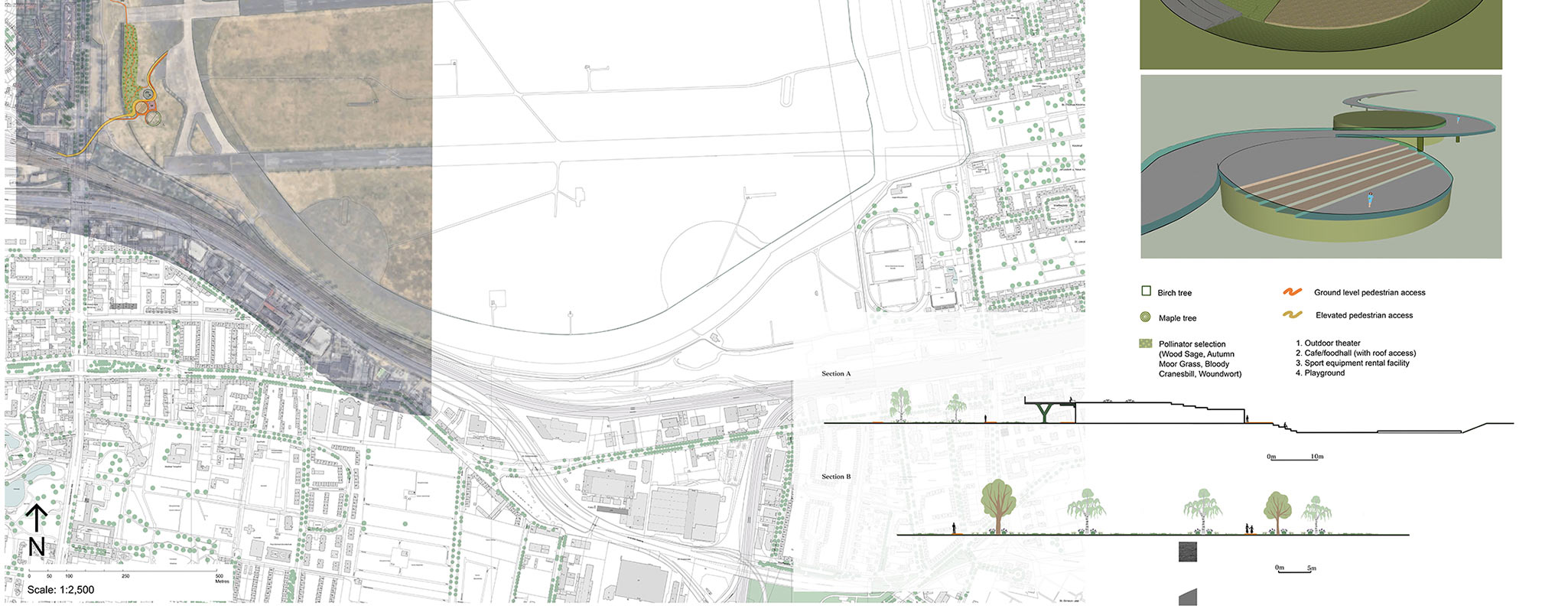

Francesca Minascurta
About the current Tempelhof Field and Berlin’s views
The South-West end of Tempelhof field is an area that sees lots of activity daily. From the heavy traffic on Tempelhof Damm to the seasonal festivals and events, the site could benefit from various interventions to become a more fluid node of interest.
Research into the site has also revealed intensive landscape management and a lack of biodiversity support for the area. Furthermore, a community of professionals named Architects4THF is strongly opposed to residential construction on the site and has called into question 40000 housing units remaining vacant throughout Berlin. A look at previous community consultations, along with a personal online investigation, has revealed that many Berlin residents are aligned with this view but open to the improvement of existing facilities and a slight change of space.
The proposed intervention
- To minimise the interaction between pedestrians and the heavy traffic road, an introduction of a pedestrian bridge that connects the existing S-Bahn station to the park while offering some panoramic views of the field. The slope is gentle, offering accessibility to everyone. Designing in tones of green can help blend it into the surrounding tree canopies, reducing visual impact.
- To provide some social nodes and aid mobility: A café/food hall building to house all the small businesses already existing on site in the form of pop-up stalls. A permanent outdoor theatre with seating not only to accommodate festivals and concerts, but also to invite the community to put on their own shows. (The roof of the café right across from the stage is accessible from the bridge, offering a second seating area.) A rental building that supplies bikes, scooters, skateboards and various sports equipment. A playground is within view of the café so that both parents and children can enjoy the facilities.
- To enhance biodiversity and reduce needed maintenance, A planted area connecting the new social hub to one of the runways. Maple trees were chosen for their fast canopy spread, birch trees for their auditory experience in the wind and unique bark colour. Both provide good autumn colours and require low maintenance. Accompanied by Wood Sage, Autumnal Moor Grass, Cranesbill, and Woundwort, they create a garden with interest all year round and great biodiversity and pollinator value. The winding paths through the mini-forest encourage a meditative walk – a shaded alternative to experiencing the park. The chosen species are resilient and would reduce the intensive management of the area from 6+ times per year to only once per year.